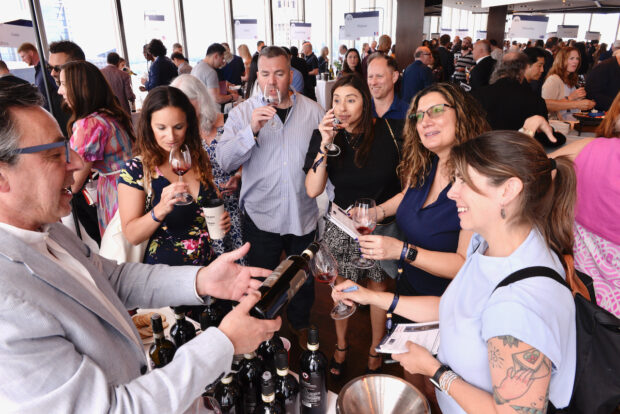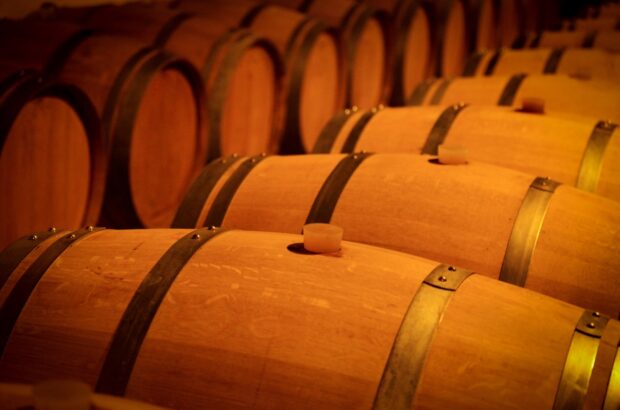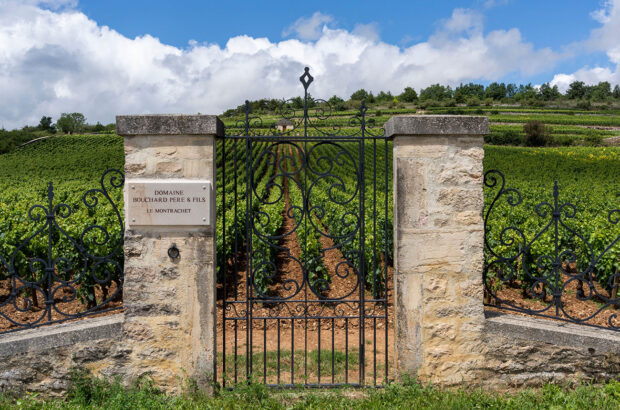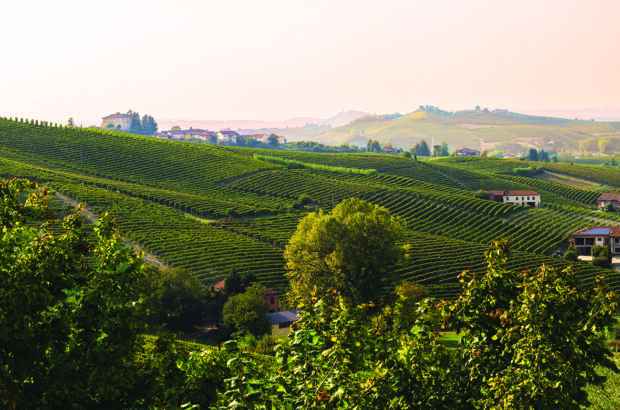- Wine has played a part in the Falco family’s fortunes for a very long time.
- While he was importing Granny Smith apple-tree cuttings from France Carlos first thought of bringing in some vines for the family estate.
- The Malpica vineyard was planned with guidance from Professor Peynaud of Bordeaux University.
- Carlos Falco’s other major impact has been in the development of wine laws in Spain.
Carlos Falco is quick to point out that he is not a winemaker, but an agronomist and agricultural engineer. He studied in Louvain, Belgium, in the 1950s and then moved on to do postgraduate work at Davis in California, where in 1964 he met Dr Maynard Amerine who first fired his enthusiasm for wine.
Family history
Wine had, however, played a part in the family’s fortunes for a very long time before that. In the fighting which accomplished the reconquest of most of Andalucia in the fourteenth century, a soldier by the name of Ribera distinguished himself particularly and was rewarded by Pedro of Castile (later Pedro I of Portugal) by the grant of 10,000 hectares in the valley of the river Pusa (a tributary of the Tajo/Tejo/Tagus) which featured deer, wild boars and bears.
The Riberas planted olive-trees and vines and settled down to a post-reconquest tranquillity which included intermarriage with the Fernndez family from Crdova (Crdoba). In later years the family acquired lands in the region of Grin, (Madrid) and the Seor (‘squire’) of Valdepusa also became the Seor of Grin. Another marriage in the seventeenth century brought in the Moncayo family, grandees of Spain, and the Seoro de Grin was ‘promoted’ to the status of Marquesado in the 19th century by Queen Isabella II: the Senor became a Marques.
The first republican government confiscated the Dominio de Valdepusa in 1933, although it was returned by the second republican government in 1935, and Carlos Falco’s grandfather sold half of it to the town of Malpica de Tajo in 1945, at an affordable price subsidised by the Franco government. Peace was thus re-established between the Dominio and the local townspeople.
Personal history to present
Carlos was born in 1937, in Sevilla. The family had been on holiday in the Basque country when the civil war broke out in July 1936 and found it impossible to return to Madrid. The Royal Navy obliged with passage to France, and they subsequently sailed to Portugal and re-entered Spain. Carlos Falco’s mother, Hilda Fernandez de Cordova spent the rest of the war in the home of the Duque de Alba in Sevilla while her husband went off to fight against the republicans ‘for the restoration of the monarchy’.
The young Carlos Falco spent a lot of time across the border in Portugal where one of his childhood friends was Juan-Carlos, the young grandson of the exiled King of Spain, Alfonso XIII. They played, learned to ride and hunted together and when, very much later, Juan-Carlos became King of Spain, the friendship continued. Indeed, the heir-apparent Prince Felipe and his sister Princess Elena helped to tread the first Syrah vintage at Malpica in 1995.
In 1963, at the age of 25, Carlos married the Swiss Janine Girod. In due course they had two children – the eldest son Manuel (Manolo) and daughter, Xandra, both of whom have just presented Carlos with grandchildren. The marriage ended in 1970.
Carlos Falco returned to Spain to manage the family estates in 1964, but for 10 years hardly considered wine. He planted tobacco in Extremadura and the family fortunes were heavily involved in fruit-trees and olive-groves. It was while he was importing Granny Smith apple-tree cuttings from France that he first thought of bringing in some vines for the family estate at Valdepusa. He remembered Maynard Amerine’s teachings about the success of Cabernet Sauvignon and Chardonnay in California – and the similarity of the climates of California and Toledo – and inquired about importing suitable vines. This was banned by the authorities in France who didn’t want anybody else to plant French vines, and by the government in Madrid who didn’t want any more foreign varieties to be imported. Falco solved the problem by smuggling vine-cuttings in along with his Granny Smiths cuttings and, given that the Malpica estate is six kilometres from the nearest human habitation and two kilometres from the nearest road, nobody was any the wiser.
The Malpica vineyard was planned with guidance from Professor Peynaud of Bordeaux University. Carlos Falco also decided to use, for the first time in Spain, a drip irrigation system he had seen on a trip to Israel in 1972. The first vines – Cabernet Sauvignon – were planted in 1974, and the first commercial vintage produced from the 1982 crop. This coincided with other events in Carlos Falco’s life which threatened to derail the project. In 1980 he met and married the Filipino beauty Isabel Preysler, who had been married to the singer Julio Iglesias. The Spanish gossip columnists had a field day: Carlos was labelled a jet-setting playboy and hauled through the pages of various scandal-sheets on a regular basis. Not that this bothered him, but he began to worry that the new Malpica wines wouldn’t be taken seriously by the market. In the event, any bad publicity was wiped out by an enthusiastic response abroad – particularly in the UK – and the first vintage sold out. In the meantime, Isabella gave birth to a daughter, Tamara, but the marriage broke down in 1985 and they were divorced.
In the 1980s, Carlos Falco diversified, with a Rueda in 1982, Durius – a wine made with grapes from the DOs Toro and Ribera del Duero – and a Rioja. In due course all these would come together in his joint-project with Arco (Bodegas Unidas) which includes Marques de Monistrol (Cava and Penedes wines), Berberana and Lagunilla in Rioja, and the new winery in Argentina.
Plantings at Malpica continued: Syrah in 1991; Chardonnay and Petit Verdot (the first in Spain) in 1992, more of both in the late 1990s; and a new clone (117) of Graciano in 2000. There were other changes too: in 1987 Carlos had met Fatima de la Cierva, a scion of one of Spain’s oldest families, the Infantado. His reputation was a little ‘colourful’ for her traditional family at first but he persevered, and they were eventually married in 1993. Eschewing the privileged life of the Spanish aristocracy, Fatima has spent her professional life as a social worker in the nearby town of Talavera de la Reina working with deprived children. She has also overseen the redevelopment of the old Malpica stable-block into an office and computer complex, complete with conference and dining facilities, which opened this year.
New projects continue: Argentina began in 1996 and Arco is building a new winery in Arribes del Duero – at Fermoselle in the province of Zamora – which will make the existing red and white Durius wines as well as a new one, Gran Durius. The new vineyard will be mainly Tempranillo, with Cabernet Sauvignon, Merlot, Malbec, Syrah and the obscure Juan Garcia, which Carlos believes is a grape with a future.
Impact on the wine laws
Carlos Falco’s other major impact has been in the development of wine laws in Spain. The early Malpica wines were simply classified as Vino de Mesa (Table Wine) and weren’t permitted to carry the name of a grape or a vintage date. The law was changed to allow wines to classify themselves as ‘Vino de Mesa de…’ (in this case, ‘…de Toledo’) to allow varieties and vintages to be listed, largely as a result of Carlos’ lobbying. In 1998, having seen the massive success of the French Vin de Pays d’Oc (in which minimal regulation had allowed new-wave winemakers to produce some astonishing wines) he recommended to the agricultural department of Castilla-La Mancha (which includes Toledo) that there should be a region-wide Vino de la Tierra classification. This came into law in 1999 as the VdlT de Castilla. Neighbouring Castilla-Leon was livid at first, but is now setting up its own VdlT de Castilla-Leon, and the new Durius venture will come under this classification.
Carlos and Fatima now have two children – a son Duarte, born in 1994 (after whom one of the Argentine wines is named) and a daughter Aldara born in 1997. Carlos, predictably for a country gentleman, enjoys hunting and shooting but also has a love of music, especially Mozart and the Baroque. Both he and Fatima love to travel, which is just as well, given the extending compass of the Grinon empire.












